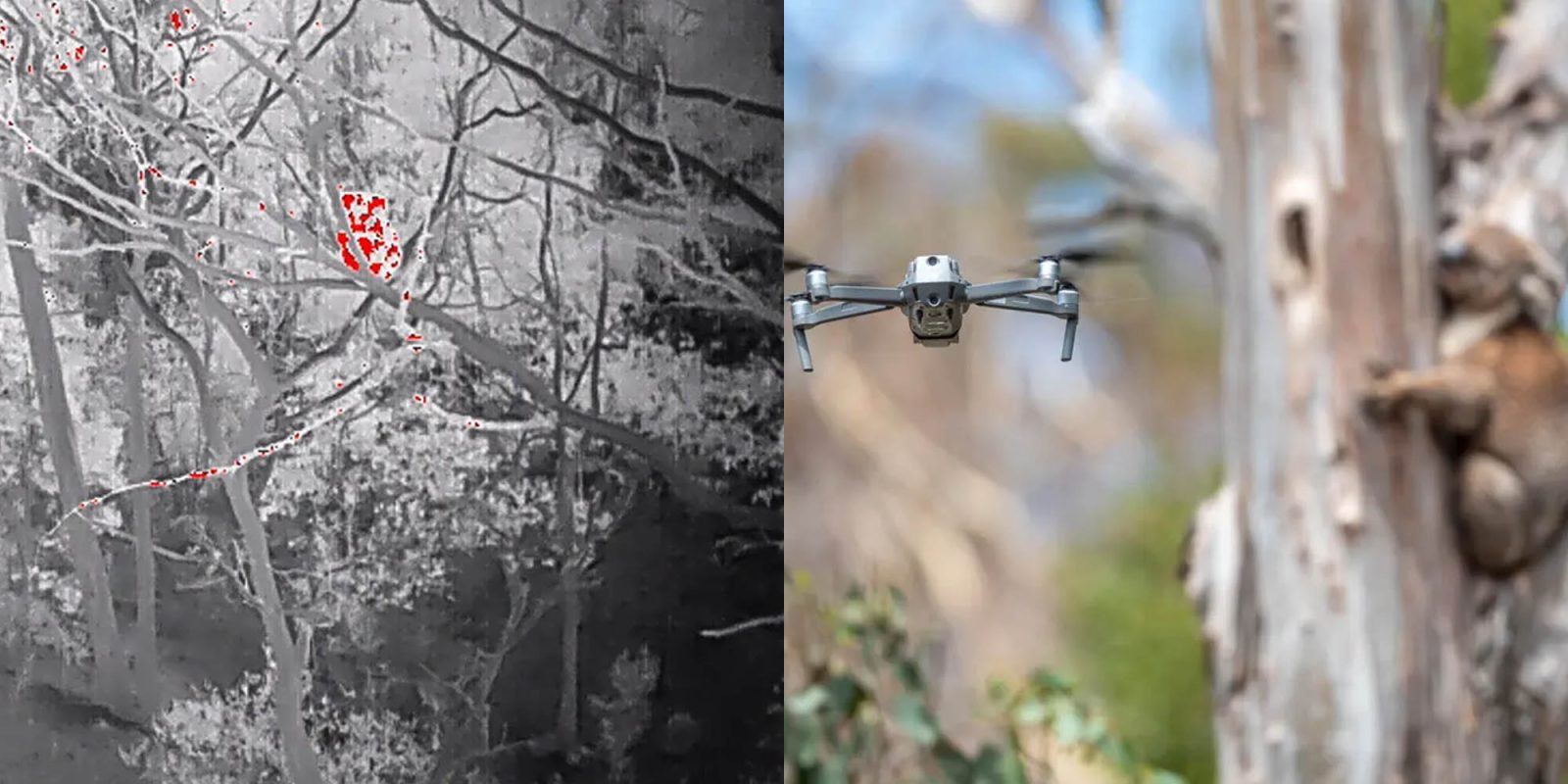
Government administrations and researchers in Australia are teaming to use drones and facial recognition technology in an effort to count, monitor, and protect the nation’s beloved koala bears.
The government of South Australia, wildlife specialists at Flinders University, and the conservation charity Koala Life have worked up a plan to fly drones to film koalas in their habitat, and run that footage through facial recognition applications to identify individual bears. The process seeks to create a full repertoire of each member of the state’s koala population, and monitor how their total numbers evolve over time. The ability to distinguish the marsupials from one another will also permit researchers to better understand their movements, behavior, and psychology – and determine whether the presence of nominally noninvasive drone watching creates significant stress.
Drones shooting footage for facial recognition purposes will be flown initially amid captive koalas at Cleland Wildlife Park in Adelaide Hills, about 14 miles south of central Adelaide. Those will be instrumental to gathering imagery to test the effectiveness of computer identification of individual bears, and collecting visual behavioral information – including signs of stress. If the approach is deemed efficient and non-disruptive to the creatures, live flights will begin in natural settings on South Australia’s Kangaroo Island, and in the Adelaide Mount Lofty Ranges.
Drone surveillance and facial recognition of koalas part of Australia’s expanding use of UAV to protect wildlife
Deployment of the coupled technologies is part of Australia’s effort to obtain a fuller understanding of wildlife populations that were considerably diminished by the country’s recurring giant fires.
“Koalas are declining in parts of Australia, and while in South Australia numbers were pretty good, the recent fires have reduced the numbers dramatically,” Flinders University researcher Diane Colombelli-Négrel said on Koala Life’s website. “We need to ensure that we are aware of the new numbers, aware of their recovery post fires, and can minimize other impacts that affect their survival… It is very important to develop non-invasive techniques to monitor animals such as facial recognition or drone monitoring, if it is proven that it has low impact on the koalas.”
Update October 5:
So how is Colombelli-Négrel and her Flinders U. team making sure the presence of drones isn’t wigging observed koalas out?
They’ve been outfitted with Fitbits to provide heartbeat feedback that allow comparison of pulse rates before and after the craft turn up. She said koalas and other animals may seem outwardly calm during aerial monitoring, even as their hearts race. To see whether that was the case in current tests, about 40 of the bears were tech-ed up with Fitbits.
“We put it on their wrist and it picked up the koalas’ heartbeats straight away,” Colombelli-Négrel tells Kiwi site RNZ. “We didn’t even have to shave them.”
Still, the researchers had to adapt when the bears responded to the Fitbit-monitored drone surveillance in other ways – notably by chewing the brightly colored wrist straps.
“The koalas seemed to be playing a bit more with the bands, but by using black, which is more neutral, they didn’t seem to care,” she says of what turned out to be short-lived indifference. “We (finally) had to remove the wristband and use veterinary gauze bands instead.”
The combination of drones with facial recognition and other tech to monitor koalas isn’t the first time the craft have been used in Australia to get more accurate information on post-fire wildlife counts.
Recently, a program that feeds data from artificial intelligence-enhanced flights in the bush to computing hubs at Queensland University of Technology went into operation. That process allows for faster and fuller distinction of various creatures counted in the wild, producing more accurate census information on the different species spotted. Self-learning capacities of the same platform, meanwhile, means the range of birds and animals tallied will expand as the campaign continues, and relayed images diversify.
“Drone use in animal research is used a lot across Australia, especially in Queensland to monitor koalas,” Colombelli-Négrel says. “”Until now, potential behavior and physiological impacts haven’t been extensively researched so we are one of the few groups investigating this.”
FTC: We use income earning auto affiliate links. More.




Comments